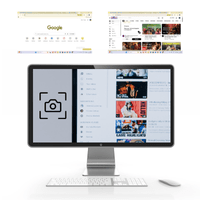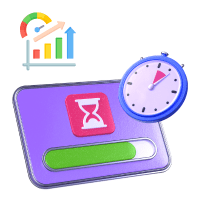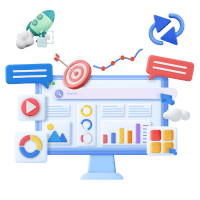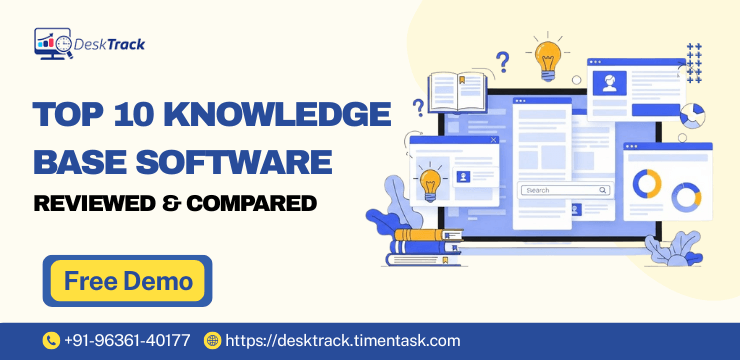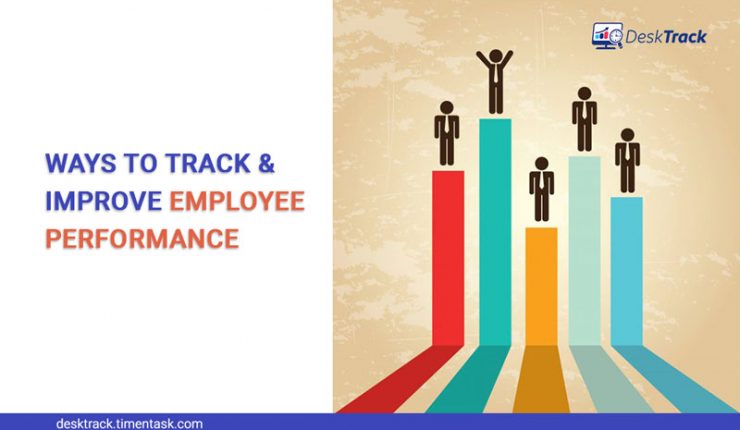
When we talk of successful business then employee performance is the fundamental element, and companies that invest in the growth and development of their employees succeed over their competitors. Track and Improve Employee Performance, on the other hand, can be quite challenging, especially for big businesses with a large workforce.
Continue reading to learn about some of the most effective ways to track and improve employee performance that can assist big companies in accomplishing their set goals.
Why is It Important to Track Employee Performance
Companies that wish to improve employee performance must monitor it. Regardless The majority of employees, in truth, aren’t always giving their best, and they need direction from their managers or other leaders. However, you can only accomplish this if you are aware of how well they are functioning to begin with. If you’ve ever worked for a company without an employee productivity tracker, you’ll know just how important this may be for the advancement of your career as it:
- Increase Employee Productivity and performance of employees
- Determines the strengths and weaknesses of a worker
- Determines personal competencies and determines the appropriate position for each employee
- Increases staff morale
- Develops a strong sense of responsibility
- Promotes creativity and innovation
The effectiveness of the employee performance tracking system’s implementation, however, is the only factor affecting the aforementioned advantages. Leaders must integrate technology into the company culture in order to fully utilize it. To excel in your line of work, you must maximize your employees’ talents and minimize their weaknesses.
5 Effective Ways to Track Employee Performance
Many organizations think it’s impossible to effectively track employee performance given the volume of tasks an employee must complete each day. Even though it can seem pointless, some leaders are exploring effective approaches to track employee performance.
1. Employ Self-starters:
Hiring self-starters and giving them responsibility for achieving goals is more productive than micromanaging them.
- Create daily check-ins and encourage members to share their successes and challenges.
- If an employee needs help achieving goals, they must ask for assistance.
- Encourage employees to seize every chance to acknowledge those succeeding and establish success standards for the rest of us to strive for.
2. Prioritize Your Goals, Not hours worked:
Micromanaging all facets of their employees’ jobs is something that too many bosses emphasize. Employees tend to be demotivated by this, in contrast to being unproductive. Employees who are managed in this way frequently become disinterested in their jobs and begin counting down the hours until their shift ends. An employee who has received proper training won’t require ongoing babysitting.
- Set team members’ goals for both the short and long term and concentrate on seeing each project through rather than controlling every aspect of their day.
- Create performance indicators for each objective so you can keep tabs on the project’s development.
- Celebrate each short-term success with the staff.
- Their ongoing progress toward their next goal and accomplishment keeps staff members engaged.
3. Use Performance Management Software:
The most valuable resource in a company is its workforce. You want to assist them in doing their best work, developing their talents, and remaining productive. It is feasible to analyze and discuss employee performance constructively with an excellent performance management strategy. Employee performance management software assists your organization in successfully implementing that strategy.
Using employee time tracking software is particularly effective because it supports both short-term strategy and long-term company goals.
- With performance review cycles and automatic reminders, you can stay on track.
- Establish goals and keep track of their progress and completion.
- Keep track of each employee’s performance.
- Identify high-potential and high-performing personnel.
- Analyze real-world performance data to identify trends in individuals, departments, roles, and the entire organization.
4. Conduct Regular Employee Engagement Review Surveys:
Employee engagement must be measured in every business. When conducting an engagement survey, it is critical to measure employee satisfaction and attention. A survey can help businesses identify areas for improvement and foster a culture of constant growth.
It is critical to conduct regular employee engagement and satisfaction surveys in your organization throughout time. Employee engagement surveys can help your company identify areas for development and cultivate a culture of continual improvement. Benchmarking your accomplishments against industry standards and benchmarking partners is crucial for ensuring that you are on the correct track.
- Encourages the growth of enduring ties between management and staff.
- Allows for the discussion of progress and performance.
- Helps in determining the need for training and development.
- To perform properly, employees must understand what is expected of them.
5. 360-degree Evaluation:
This method, as the name implies, looks at feedback, opinions, and assessments from a group of people.
- This includes team members, bosses, and those with whom the individual works.
- By looking beyond what the direct manager sees, you are given a more complete picture of your performance.
- Look at the 360-degree data from the different domains for any commonalities, since this will reveal areas for further improvement.
4 Effective Ways to Improve Employee Performance
We can improve employee performance through consistent efforts and innovative strategies because it is an ongoing process. Let’s look at some practical approaches to assist large corporations in improving employee performance.
1. Make Learning and Growth a Top Priority:
Poor performance often corresponds to a skill or knowledge mismatch. By emphasizing learning and development, employees are reminded of best practices while also learning new skills and progressing along their professional path.
Work with employees to develop personalized L&D programs because giving employees a say in how and what they learn keeps them engaged and boosts motivation.
2. Set Clear Expectations:
Employees need to know what is expected of them to perform well. Setting clear expectations and goals helps employees stay focused, understand their responsibilities, and avoid confusion. Some tips to set clear expectations include:
- Define clear job descriptions and responsibilities
- Provide regular feedback and performance reviews
- Encourage open communication and setting SMART goals (Specific, Measurable, Attainable, Relevant, and Time-bound)
3. Establish a Strong and Healthy Work culture and surrounding:
A positive work culture can boost employee morale, decrease attrition, and boost overall productivity. Here are some suggestions for creating a positive working culture:
- Encourage a healthy work-life balance.
- Celebrate achievements and milestones
- Prioritize team-building activities and social gatherings.
4. Recognize and Reward High-Performing Employees:
Recognize and reward high-performing employees to enhance motivation and engagement while also generating healthy competition among employees. Here are some ideas for recognizing and rewarding high-performing employees:
- Give bonuses, promotions, or wage increases to deserving employees.
- Host monthly events for public recognition in the company, such as employee of the month awards or certificates.
- Distribute prizes such as gift cards, free dinners, or extra vacation days to new rising employees.
Tools for Tracking Employee Performance
You may track employee performance within an organization with the assistance of a variety of performance management tools. The ease of access and availability of these instruments has benefited businesses. They have helped organizations bring out the best in their employees.
The following are some of the most effective tools you can utilize to maximize your performance:
- DeskTrack
- Performing
- Synergita
- BambooHr
- iDoneThis
- Performyard
The right tool will be determined by your organization’s demands and requirements, as well as the size of its employees. Conduct a thorough analysis to improve employee performance within your company before selecting the ideal tool.
Wrapping Up
To Track and improve employee performance, It is critical for big companies looking to stay competitive in today’s market. By implementing the strategies discussed in this article, companies can create a culture that values employee development, encourages collaboration and creativity, and drives success. Remember, the key to improving employee performance is to track it regularly, provide regular feedback, and invest in employees’ professional development. Start today, and start seeing the results in no time!
FAQs
Q.1: What are the primary benefits of Tracking Employee Performance?
Ans: Businesses constantly track their employees to guarantee smooth and timely operations. There are various advantages to tracking employee performance, including:
- Increases overall productivity
- Aids in increasing transparency
- Improves the effectiveness of training programs
- Encourages a culture of lifelong learning
Q.2: What exactly is Performance Management Software (PMS)?
Ans: Performance management software is an innovation that helps businesses better understand their employees’ performance and productivity. It enables managers to easily follow, analyze, and evaluate their employees, ensuring that goals are accomplished and issues are addressed as soon as possible. The resulting performance management data can be used to inform remuneration, career progression, corporate goals, hiring decisions, performance reviews, and pretty much anything else connected to human capital management. Performance management system software is not a fresh initiative in HR technology; it has always been customized to meet the needs of the industry. As technology advances, this critical tool adapts to shifting trends and the needs of employees and companies.


